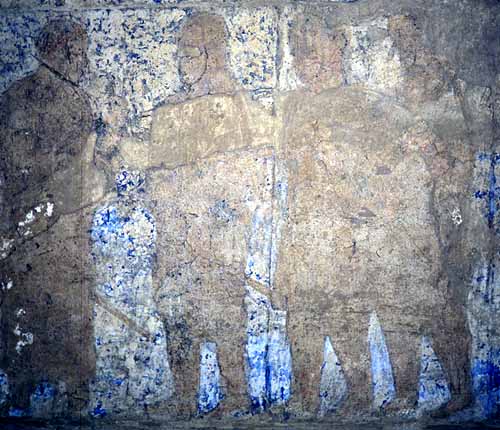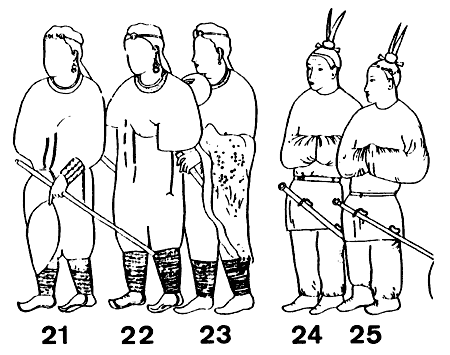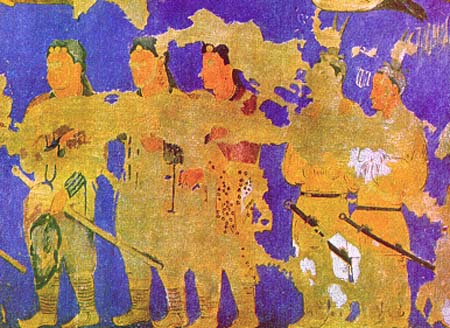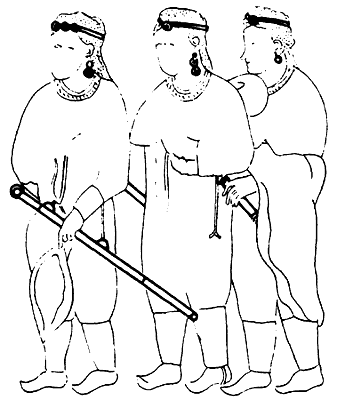
| Court art of Sogdian Samarqand in the 7th century AD | |||||||||||||
| Home | General | Western Wall | Northern Wall | Eastern Wall | Southern Wall | Bibliography | |||||||
 |
|
|||||||||||||||||||||||||||||||||||||||||||
Western wall
Figures no. 21, 22, and 23 belong to the delegates of group B2. Unfortunately almost every detail of the persons is completely defaced:

Above: In the left is figure 20, a group captain. The remaining persons are delegates 21-23.
Our next two illustrations give some impression of what was seen by the excavators. The images are taken from Al'baum's book. First the drawing:

Besides figures 21-23 the drawing also depicts the Korean delegates no. 24-25. The same is true for the below copy of the section in question:

Persons 21-23 are characterized by some unique details: They wear puttees and they have a headgear that consists of something like a diadem with two or three golden circles. Figure 23 seems to carry a leopard's skin. The sword of figure 21 is furnished with a ring-pommel (but note the differences between the drawing and the coloured copy).
| Right: This image has been drawn by Istvan Bóna and combines apparently the details given
in Albaum's copy and drawing: [Image after Bóna, I.: Studien zum frühawarischen Reitergrab von Szegvár - In: Acta Archaeologica Academiae Scientiarum Hungaricae (Budapest), t. XXXII, 1980, pp. 31-95 (p. 37, fig. 5)] |
 |
Now, what may be said concerning the identity of these delegates?
Al'baum considered the puttees a diagnostic detail. He argued that they are even today typical among Tianshan mountain people. Therefore he saw in figures 21-23 delegates from Chach, the region of Tashkent. Obviously Al'baum was inspired by the fact that delegates from Chach are mentioned in the main inscription. - I. Bóna concentrated on the headgear. He cited some parallels from Central Asia, from Tuva, and from Avar tombs in present-day Hungary.
All this is not conclusive. Concerning the puttess we should only add that they appear in the eastern parts of Central Asia as well as in mountainous regions of Southeast Asia.
In the end we cannot offer a solution. The only hint comes from the ring-pommel of the sword worn by figure 21. Taken this detail for granted the weapon can definitely be assigned to greater Eastern Asia. A closer localization is simply impossible. But the fact would emphasize the general eastern origin of all delegations in group B.
Back to main text (western wall)
 |
|
|||||||||||||||||||||||||||||||||||||||||||